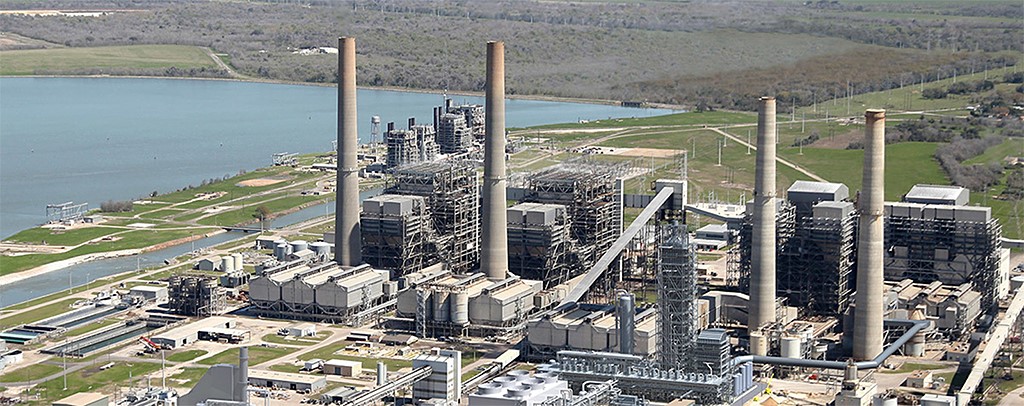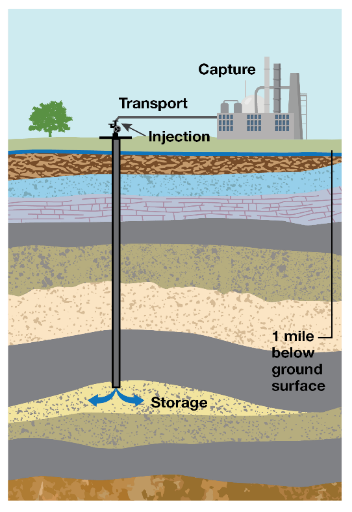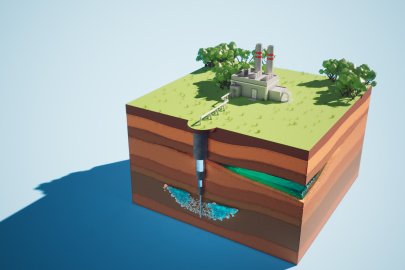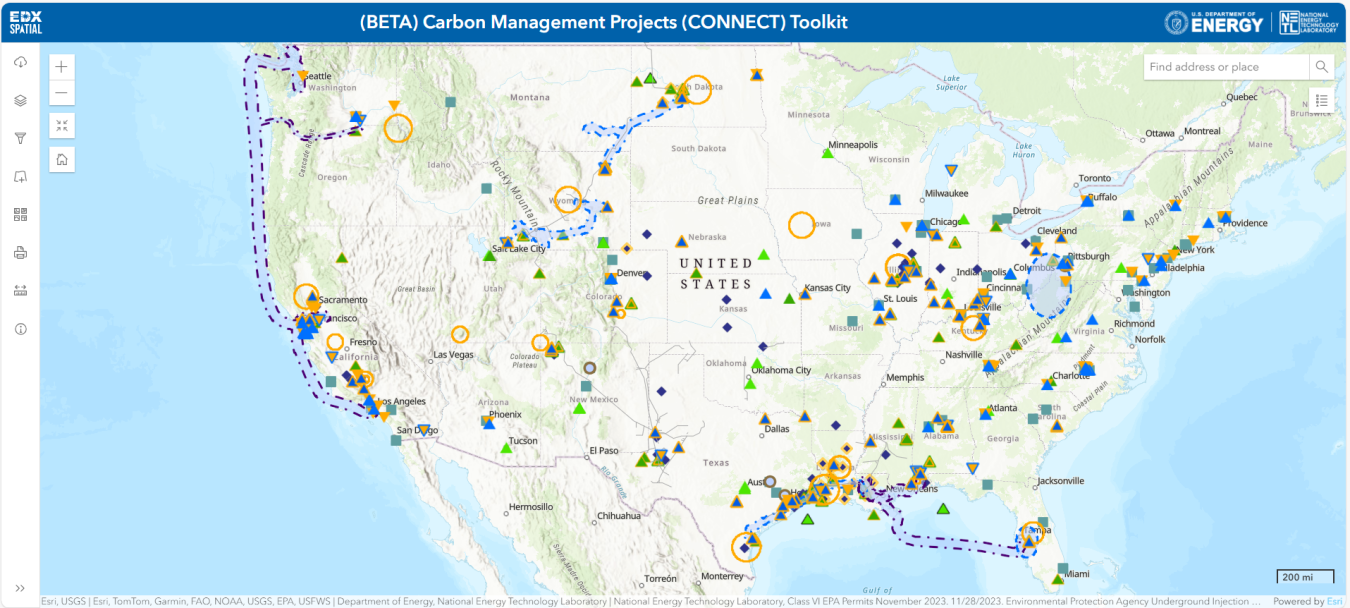The U.S. Department of Energy (DOE) uses “carbon management” as an umbrella term because it encompasses a variety of technologies and pathways that reduce carbon dioxide emissions in support of achieving net-zero greenhouse gas emissions by 2050. DOE’s Office of Fossil Energy and Carbon Management (FECM) is investing in the following carbon management areas:

Carbon capture is a decades-old process that dates back to the 1930s and captures carbon dioxide emissions from stationary sources like power and industrial plants. There are many examples of commercial carbon capture facilities—Archer Daniels Midland in Illinois, Boundary Dam in Canada, and Sleipner and Snøhvit in Norway, to name but a few—and this technology can be used in diverse applications, including ethanol, cement, steel, and pulp and paper production. It is important to demonstrate carbon capture in different operating conditions and continue to bring down the cost curve of this important decarbonization tool.
Image: The FECM-supported Petra Nova project started commercial operations in 2017 as a “first-of-a-kind” and the world’s largest post-combustion carbon capture project. In full commercial operation as of August 2024, it has sequestered over 4 million metric tons of CO2.

Hydrogen with carbon management is another application of point-source carbon capture involves capturing carbon dioxide emissions generated from converting natural gas to hydrogen. Although hydrogen can be made through a process called electrolysis—using electricity to split water into hydrogen and oxygen—currently, more than 95% of the roughly 10 million metric tons of hydrogen produced in the United States comes from natural gas without carbon capture, which results in significant carbon dioxide emissions. Hydrogen is currently used in petroleum refining and fertilizer production, and other markets for hydrogen are starting to emerge—such as transportation, utilities, and industrial uses like steel production. It is important to decarbonize hydrogen produced with natural gas to help the nation speed its trajectory toward a net-zero future.
Image: Carbon capture retrofit on hydrogen production at the Air Products facility in Port Arthur, TX; in operation since 2013

Carbon transport, storage, and conversion to achieve net-zero, it’s not enough to capture carbon dioxide emissions; the captured carbon dioxide must then be permanently stored so it doesn’t enter the atmosphere. In some cases, transportation of the carbon dioxide will also be required. In practice, the captured carbon dioxide is compressed at the emissions source to a liquid-like state and transported via pipeline or other mode of transport (e.g., truck, rail, or ship) to a suitable geologic formation where the carbon dioxide can be injected and securely stored thousands of feet deep below any sources of underground drinking water. Alternatively, the carbon dioxide may be transported to a facility where it can be converted into useful products such as aggregates, concrete, and other durable materials. Some capture facilities may have suitable geologic storage onsite, minimizing the need for transport.
Image: A not-to-scale graphical representation of geologic storage of carbon dioxide (Source: U.S. Environmental Protection Agency)

Carbon dioxide removal involves technological and nature-based approaches that remove carbon dioxide directly from the atmosphere and store it. Examples of carbon dioxide removal pathways that FECM is investing in include direct air capture facilities that capture and separate carbon dioxide from the air using special filters, and enhanced weathering, which harnesses the ability of certain minerals to react with and permanently store carbon dioxide. When using direct air capture, the captured carbon dioxide can be stored in geologic formations deep underground or in value-added products like low-carbon concrete.
Image: Heirloom direct air capture facility in Tracy, CA, the first commercial direct air capture facility in the U.S. (Source: Heirloom)
Purpose of Carbon Management Resource Portal
DOE understands that communities and other impacted stakeholders need access to information grounded in science to better understand carbon management technologies and to represent themselves in project development conversations. Therefore, DOE has created this resource hub to meet that need and to address the following objectives:
- Provide information on the different technology areas that fall under the umbrella term “carbon management” for different knowledge levels.
- Provide information in different formats—including videos, infographics, fact sheets, frequently asked questions (FAQs), and research articles.
- Provide a mechanism for the public to ask DOE experts questions about the information in this portal.
Deployed as an interconnected system, these carbon management technologies and pathways have a critical role—alongside deploying energy efficiency, renewables, and other low-carbon energy sources—in helping to achieve net-zero goals.
Specifically, carbon capture and storage can help dramatically reduce industrial sector emissions while alternative manufacturing methods are developed over the longer term that avoid production of carbon dioxide altogether. Carbon capture and storage on power plants can play an important role, together with nuclear, geothermal, and other firm, dispatchable zero-emissions power generation, in boosting grid resilience and reducing overall costs to consumers in high-renewable, deep-decarbonization scenarios.
Carbon dioxide removal, including technologies like direct air capture with geologic storage and other forms of permanent carbon storage, is needed to counterbalance emissions from hard-to-abate sectors such as aviation and shipping for which we have no practical decarbonization alternative at this time. In addition, these technologies will enable us to remove legacy carbon dioxide emissions from the atmosphere once we reach our net-zero goals.
However, to achieve net-zero emissions by midcentury, the United States will need to capture, transport, and permanently store hundreds of millions of tons or more of carbon dioxide each year. This will require a concerted effort to build out the infrastructure to store large quantities of carbon dioxide permanently in geologic formations.
Email us at [email protected]to provide feedback on this webpage or to ask a question
Featured Resources
How to Navigate the Carbon Management Resource Table
The Carbon Management Resource Table includes the following information for each resource: name, publication year, general topic area, type, source, and a brief summary. A summary of the resource can be found if you click on the green circle with a plus symbol located next to the name of the resource.
The Carbon Management Resources Table is searchable and filterable. To search for specific information in the table, type a word or phrase into the search box below. To the left of the table, users can filter the information based on topic area, resource type, and publication year. The “carbon management” topic area includes resources with information on multiple FECM priority areas.
Carbon Management Resource Table
Disclaimer: This portal was initiated to provide interested stakeholders with a place to learn about the rapidly evolving field of carbon management. These resources are chosen by FECM staff based on their credibility, relevance, and potential applicability to interested parties. The portal includes resources that are authored by DOE, technical reports funded by DOE, and peer reviewed journal articles. Selection criteria is not dependent upon an authors’ viewpoint and instead represent timely developments and study findings that are informative and influential when considering the deployment of carbon management technologies.
A review by FECM technical experts is conducted, in most instances, before links are published. However, on rare occasions, seminal reports or timely materials that are not subject to the regular review process may be published. The posted materials do not necessarily state or reflect the views or opinions of the United States Government or any agency thereof. Moreover, neither the United States Government nor DOE, nor any of their employees, makes any warranty, expressed or implied, or assumes any legal liability or responsibility for the accuracy, completeness, or usefulness of any information, apparatus, product, or process disclosed, or represents that its use would not infringe privately owned rights. References in the materials to any specific commercial product, process, or services by trade name, trademark, manufacturer, or otherwise, do not constitute or imply an endorsement, recommendation, or favoring by the U.S. Government or DOE or its contractors or subcontractors.
Each topic-specific collection should not be considered an exhaustive or comprehensive representation of the literature or subject area. Some articles may remain behind journal subscription paywalls indefinitely, with access only feasible through payment directly to the publisher, with whom DOE does not have any relationship.
Last Updated: January 23, 2025






